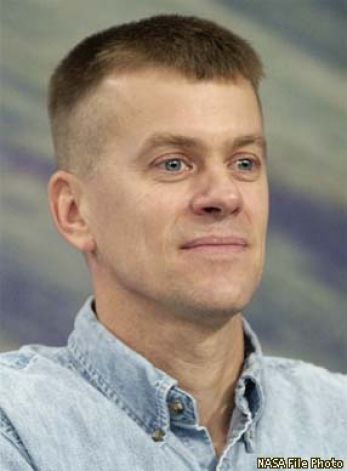William McCool (William Cameron McCool)

William McCool completed flight training and was designated a Naval Aviator in August 1986. He was assigned to Tactical Electronic Warfare Squadron 129 (VAQ-129) at NAS Whidbey Island, Washington, for initial EA-6B Prowler training. His first operational tour was with Tactical Electronic Warfare Squadron 133 (VAQ-133), where he made two deployments aboard the aircraft carrier USS Coral Sea to the Mediterranean Sea, and received designation as a wing-qualified Landing Signal Officer (LSO). In November 1989, he was selected for the U.S. Naval Postgraduate School/Test Pilot School (TPS) Cooperative Education Program. After graduating from TPS in June 1992, he worked as a TA-4J and EA-6B test pilot in Flight Systems Department of Strike Aircraft Test Directorate at NAS Patuxent River, Maryland. He was responsible for the management and conduct of a wide variety of projects, ranging from airframe fatigue life studies to numerous avionics upgrades. His primary efforts, however, were dedicated to flight test of the Advanced Capability (ADVCAP) EA-6B. Following his Patuxent River tour, McCool returned to Whidbey Island, and was assigned to Tactical Electronic Warfare Squadron 132 (VAQ-132) aboard the carrier USS Enterprise. He served as Administrative and Operations Officer with the squadron through their work-up cycle, receiving notice of his NASA selection while embarked on Enterprise for her final pre-deployment at sea period. William McCool accumulated over 2,800 hours flight experience in 24 aircraft and over 400 carrier arrestments.
Selected by NASA in April 1996, William McCool reported to the Johnson Space Center in August 1996. He completed two years of training and evaluation, and was qualified for flight assignment as a pilot. Initially assigned to the Computer Support Branch, McCool also served as technical assistant to the director of flight crew operations, and worked Shuttle cockpit upgrade issues for the Astronaut Office. William McCool was pilot of Space Shuttle mission STS-107, January 16 to February 1, 2003, logging 15 days, 22 hours and 20 minutes in space. The 16-day flight was a dedicated science and research mission. Working 24 hours a day, in two alternating shifts, the crew successfully conducted approximately 80 experiments. STS-107’s mission ended abruptly on February 1, 2003, when Columbia disintegrated during re-entry, 16 minutes before scheduled landing. All seven crew members were killed.
Born
- September, 23, 1961
- USA
- San Diego, California
Died
- February, 01, 2003
- USA
- Texas
Cause of Death
- Columbia accident
Cemetery
- North Prairie Cemetery
- Washington County, California
- USA



